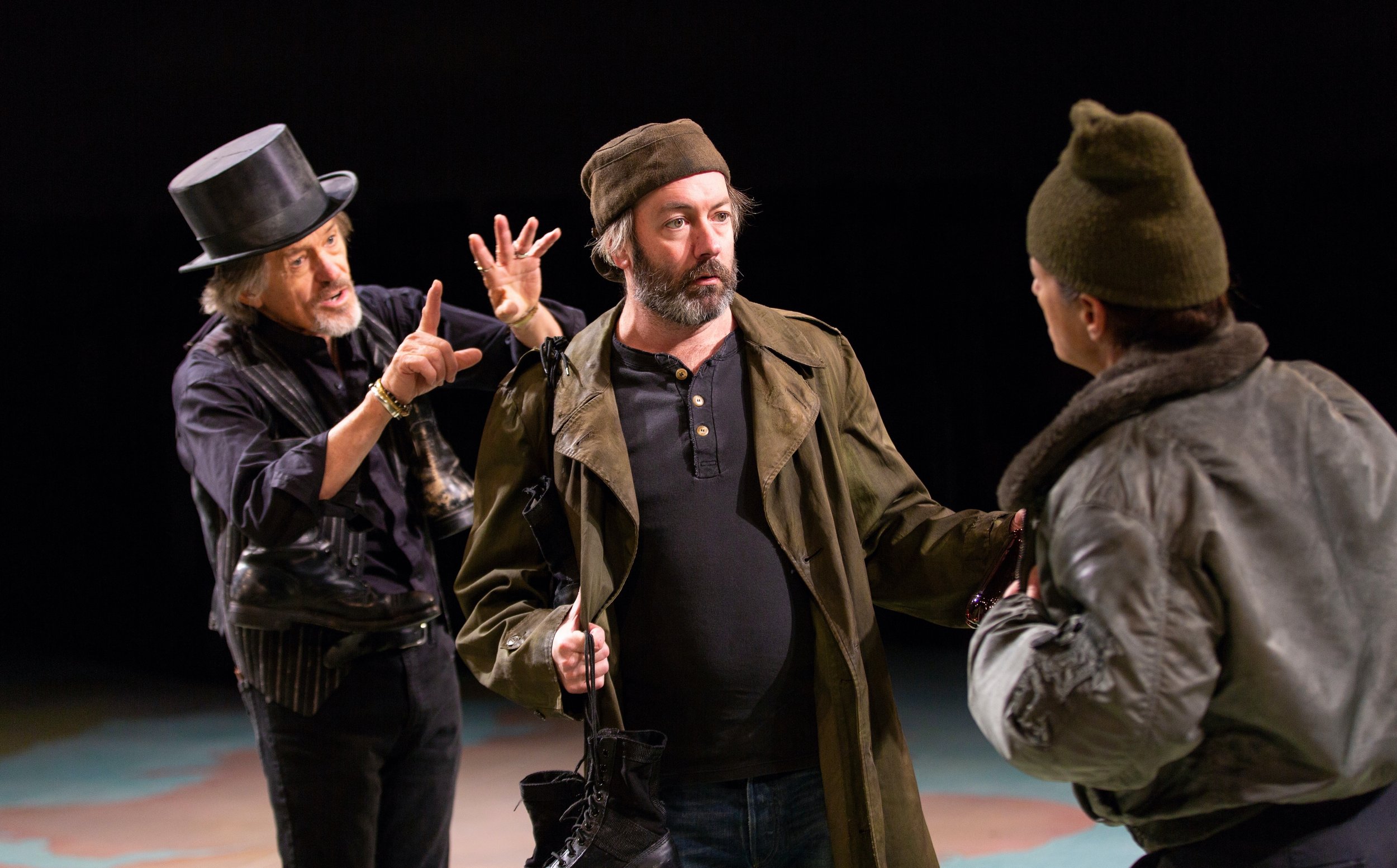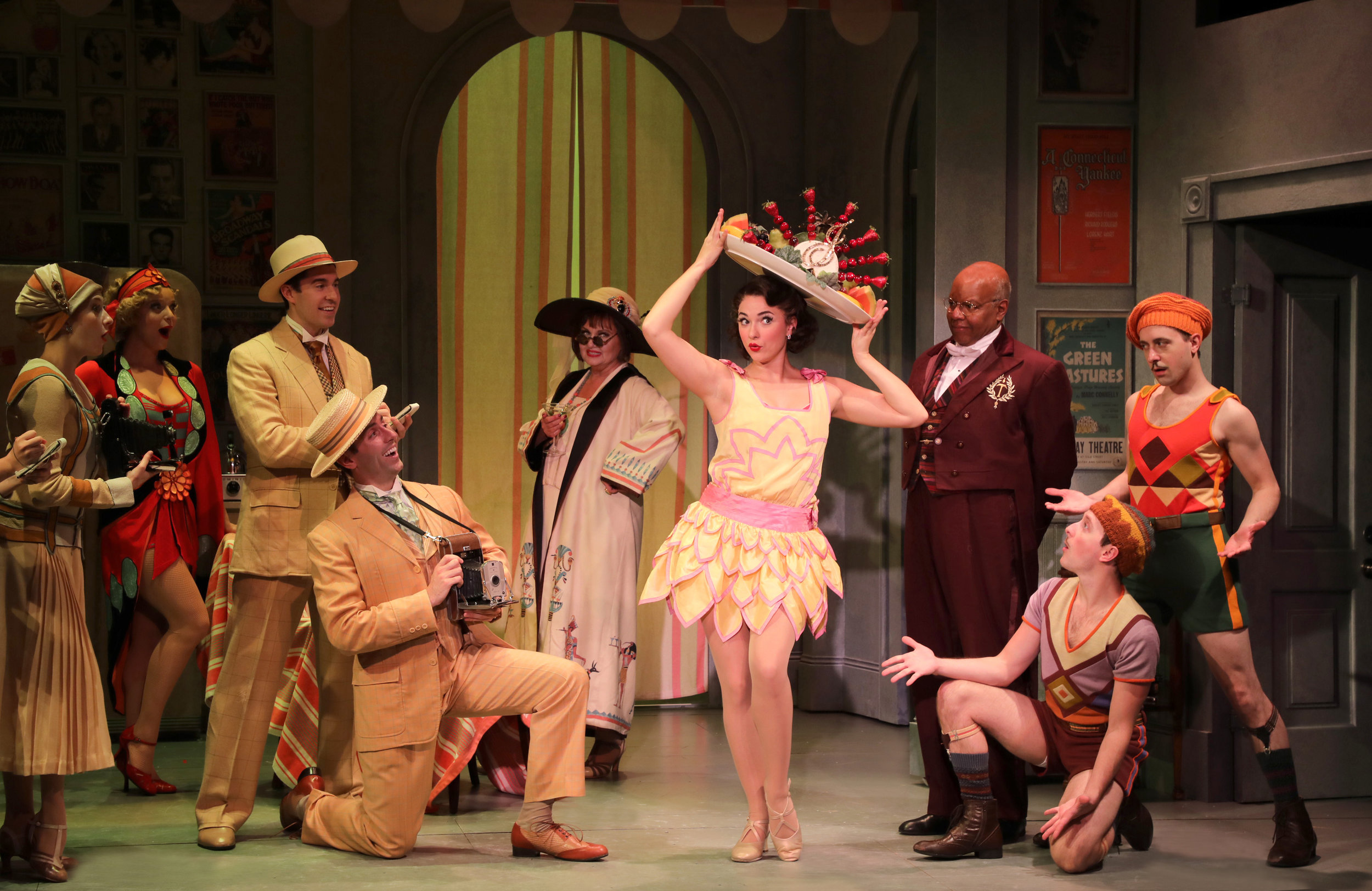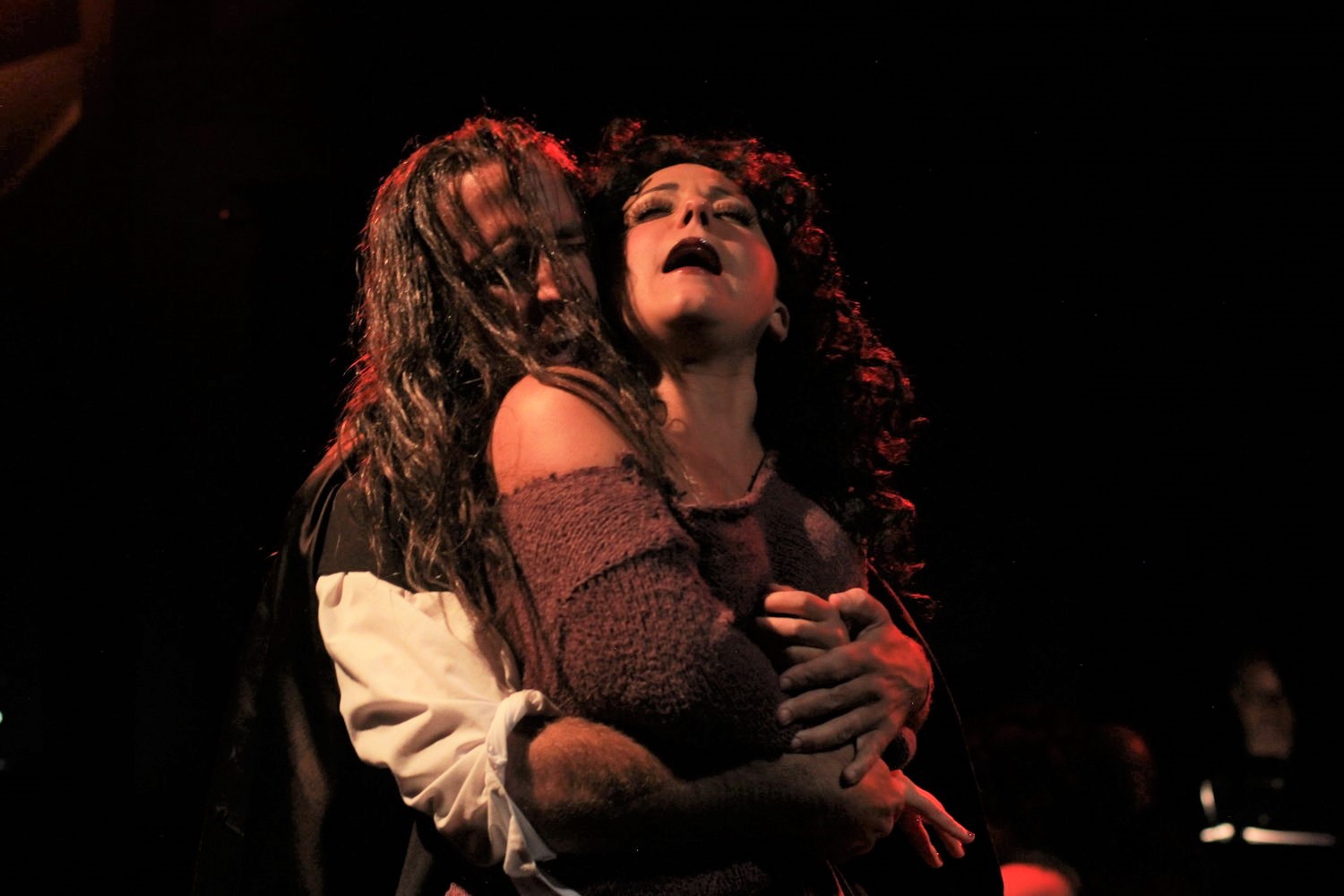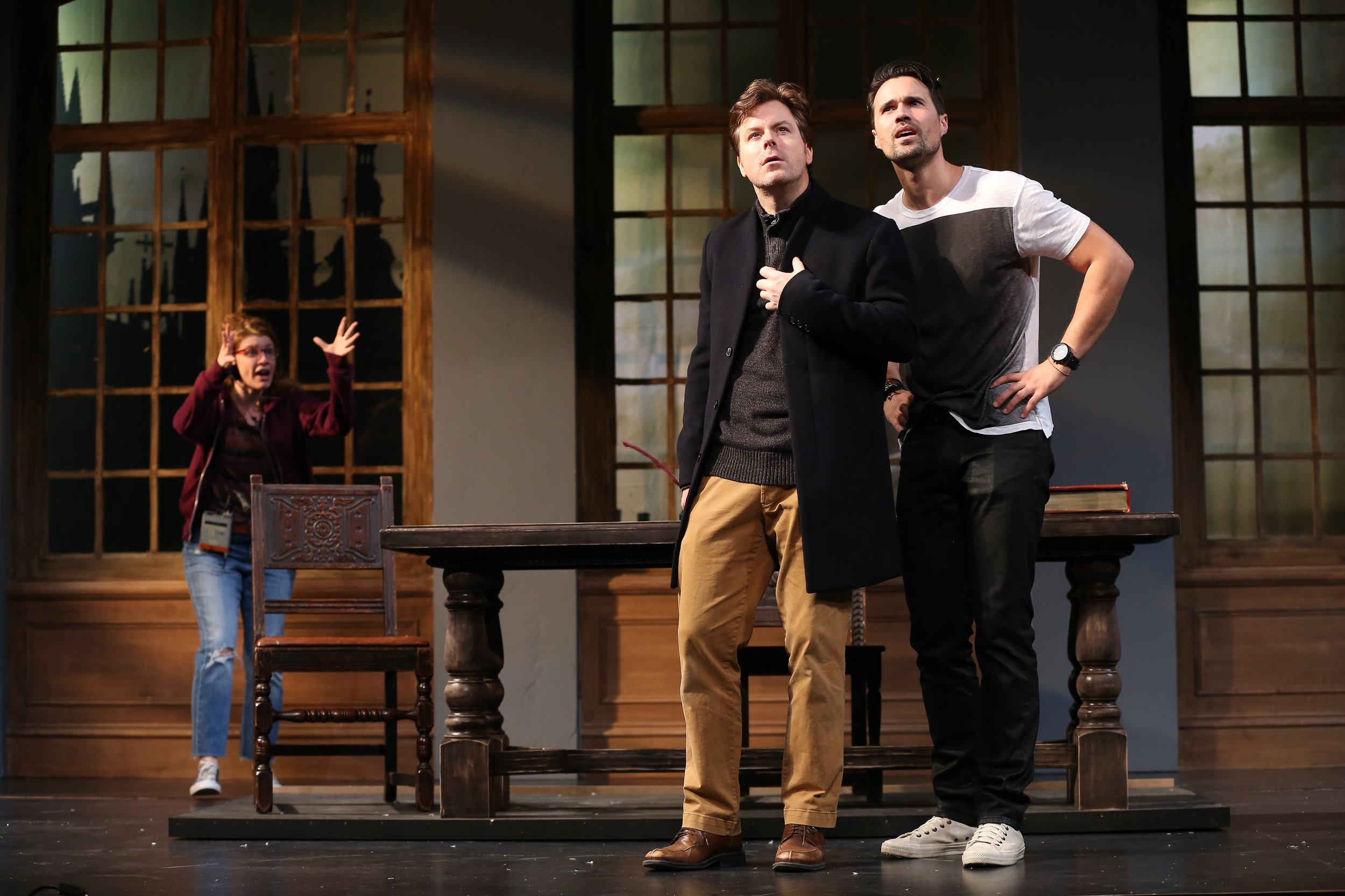Review of as U like it, Yale School of Drama
Shakespeare’s As You Like It abounds in binaries: good brother, bad brother; daughter of duke in power, daughter of duke in exile; woman dressed as a woman, woman dressed as a man; and the most formative: the court where Duke Frederick holds sway, and the open spaces of the forest of Arden. Adapted from Shakespeare’s play by Emma Weinstein and Michael Breslin, as U like it, a thesis show at Yale School of Drama, directed by Weinstein, takes the idea of Arden and runs with it toward utopia. There might be a future imaginable that would redeem all that is unbearable in our current world, beginning with the binaries that govern our sexual identity, our politics, our way of being in the world.
As the playbill states, quoting Oscar Wilde: “A map of the world that does not include utopia is not worth glancing at.” Breslin, the production’s dramaturg, comments: “the word and the concept of utopia contains a paradoxical challenge: Can the perfect place ever exist? Perhaps not. But if it could, how would you draw it up?” For Weinstein and Breslin, the perfect place follows the thinking of Tavio Nyong’o and Jack Halberstam (as quoted in the playbill), foregoing “the idealizations of straight utopian thought for the wilder speculations of queer utopia.” In its panoply of mash-ups that tease at the edges of libidinal freedom, as U like it is born of such speculations.
But first, that court. Its status as a prison-culture is underlined on every front. The audience sits regimented in seats as if waiting their turn at Motor Vehicle Services. The closed-circuit television randomly scans the crowd and puts our faces onscreen, behind all-capital declarations like on SNL. The loud drum loop is a call to martial glory, a downer deadening to any chipper bonhomie. Eventually Duke Frederick (John Evans Reese) arrives, a preening coxcomb of a leader. He wants answers, he wants results, he wants to browbeat everyone, including his somewhat vaporish daughter Celia (Eli Pauley) and her scrappier bosom buddy Rosalind (Amandla Jahava). (You’ll be forgiven for thinking of Cher and Dion.)
Duke Frederick (John Evans Reese, center), with Rosalind (Amandla Jahava), Celia (Eli Pauley), and Olivia (Zoe Mann) in shakespeare’s as u like it adapted by Emma Weinstein and Michael Breslin, directed by Emma Weinstein (Photo by T. Charles Erickson, 2018)
Rosalind becomes enamored of Orlando (Hudson Oznowicz), a Leo-like hero who reacts to her interest as if he just got tickets to a sold-out show. And that’s after he has defeated the Duke’s champion Charles (Brandon E. Burton, playing up sports-star narcissism with the help of Danielle Chaves’ hilariously fawning and preemptory News Anchor). This part of the show, with its fascistic trappings—such as name-tags each audience member is given that ask questions about gender, marital status, virility, and sexual preference—is blessedly short, but long enough to give us a clear glimpse of a future we’ve feared at least since 1984.
Rosalind, glad to be banished from this total bummer, invites—nay, exhorts—us to go with her, now dubbed Ganymede, and her sidekick Celia, now called Aliena. And we do, traveling down a short hallway to a new world unfurled. Here there are bowers and closets of to-die-for accoutrements, there are strolling players inviting us to paint our faces, tattoo our bodies, and get to know one another NSA. On a catwalk, Chaves has metamorphosed into Hymen, a glam queen à la Aladdin Sane, a mistress of ceremonies who teaches us a dance and holds forth in song, punctuated with the kind of salacious patter made famous by the MC of Cabaret.
Hymen (Danielle Chaves) in shakespeare’s as u like it adapted by Emma Weinstein and Michael Breslin, with music by Julian Hornik, directed by Emma Weinstein (Photo by T. Charles Erickson, 2018)
If you might expect the story we’re following to begin to fall apart, have no fear. Weinstein’s cast keeps its discipline in the midst of the freely moving audience and it’s quite impressive to see. Putting on the show means moving props and that sectional catwalk to places as needed, and it also means the principles have to be on spot in the different regions of Arden to deliver their additions to the new plot, which is—of course—all about eros. There’s a hint of Sleep No More in the way, as a visitor of Arden, you might find yourself caught up by some of the displays courtesy of scenic designer Elsa GibsonBraden, with Emma Deane’s bower-like lighting design and ambient sound (Liam Bellman-Sharpe) and projections (Brittany Bland) creating a total environment. Observably impressive too is the way the “radical faeries”—Zak Rosen, Annie Saenger, Tarek Ziad—take care of business, making sure things happen when and where they should, and standing in as ancillary figures to start a progress, swell a scene or two.
The thinker of this utopia is Dyke Senior (Kineta Kunutu), dressed like a kind of psychedelic revolutionary, spouting—as revolutionaries will—earnest slogans from texts meant to liberate as they berate. She dwells in her Lesbian Colony where patriarchy is the source of all woe and sex-by-penetration an act of violence. Meanwhile, over in Silvius’s Poetry Glade, poor lovelorn Silvius (Burton again, now a challenged-by-fashion nerd) earnestly seeks the smiles of Phebe (Evans again, a lad on the make in a skimpy tie-dye sleeveless T). And don’t neglect Jacques’s Out-of-the-Closet corner where Jacques (Erron Crawford), the Prince-like cynic of Arden—“fuck children, fuck the future” is his mantra—gets an airing, letting us know that self-actualization is the order of the day. Later, his “seven ages” speech stresses how much our “ages” are roles we play, or maybe it’s just that we let others cast us in those parts.
Phebe, a professed top, finds himself entertaining notions of bottoming in abandon for Ganymede, a butch Rosalind in leather and hose and attractive facial hair. Poor Celia/Aliena flounces about in drapery and wishes Rosalind would drop the hetero hang-ups and embrace omnisexuality. But alas, though Orlando might don foppish attire and let Ganymede give him one on the lips, it’s still a story of girl meets boy and boy meets girl. Orlando loves Rosalind and vice versa, and Jahava enacts the aggressive damsel well, full of androgynous machismo. Who might be equal to Celia’s pining? Who should arrive but Duke Frederick’s sister Olivia (Zoe Mann, a bit like Janet at Dr. Frankenfurter’s), alienated from her macho brother and maybe ready for reeducation.
Rosalind as Ganymede (Amandla Jahava), Orlando (Hudson Oznowicz) in shakespeare’s as u like it adapted by Emma Weinstein and Michael Breslin, directed by Emma Weinstein (Photo by T. Charles Erickson, 2018)
The play, in the midst of all the diverting busyness, goes off much as you’d expect while being vastly entertaining and wonderfully apt in its re-conceptions. An added treat is seeing the shows collaborating creators, Weinstein and Breslin, inhabiting Arden with the rest of us, duly tickled or moved by what goes on there—such as, for hilarity, Phebe’s show-stopping take-off on Mommie Dearest, and, for lyrical beauty, the passage in Mrs. Dalloway in which Clarissa contemplates Sally Seton, recited by the ever-eroticized Celia.
The attentive will catch an array of allusions, quotations, borrowings and such throughout. The whole punctuated by Chaves’ strutting and asiding and singing and making a show of being on show. And don’t forget the songs by Julian Hornik, my favorite probably the one sung by Jacques, a paean to how animal we all are when the accessories come off. The play ends not merely with the marriage of three couples—male/female, female/female, male/male—but our subversive MC orders us all to find a partner—dosey-doe—and get hitched along with the characters. As Groucho might say, “Bigamy? Of course it’s big o’ me. It’s big o’ you too. Let’s all be big for a change.” Eros, after all, is the life force. Til death do us part.
A fantasy, a celebration, a provocation, as U like it is also a lesson in how to rise and risk against a repressive status quo for the sake of joy and fun. If you don’t like it, I fear for U.
William Shakespeare’s
as U like it
adapted by Emma Weinstein and Michael Breslin
with original music by Julian Hornik
directed by Emma Weinstein
Choreographers: Michael Breslin, Erron Crawford; Music Director, Arranger, Composer, Sound Designer: Liam Bellman-Sharpe; Scenic Designer: Elsa GibsonBraden; Costume Designer: Alicia J. Austin; Lighting Designer: Emma Deane; Projection and Video Designer: Brittany Bland; Tent Installation Designer: Itai Almor; Fight Director: Michael Rossmy; Production Dramaturg: Michael Breslin; Technical Director: Kirk Keen; Stage Manager: Sam Tirrell
Cast: Brandon E. Burton, Danielle Chaves, Erron Crawford, Amandla Jahava, Chad Kinsman, Kineta Kunutu, Zoe Mann, Hudson Oznowicz, Eli Pauley, John Evans Reese, Zak Rosen, Annie Saenger, Oliver Shoulson, Camille Umoff, Tarek Zlad
Musicians: Margaret Douglas, bass; Thomas Hagen, drums; Jeremy Weiss, piano; Jonathan Weiss, guitar
Yale School of Drama
October 23-27, 2018



































































